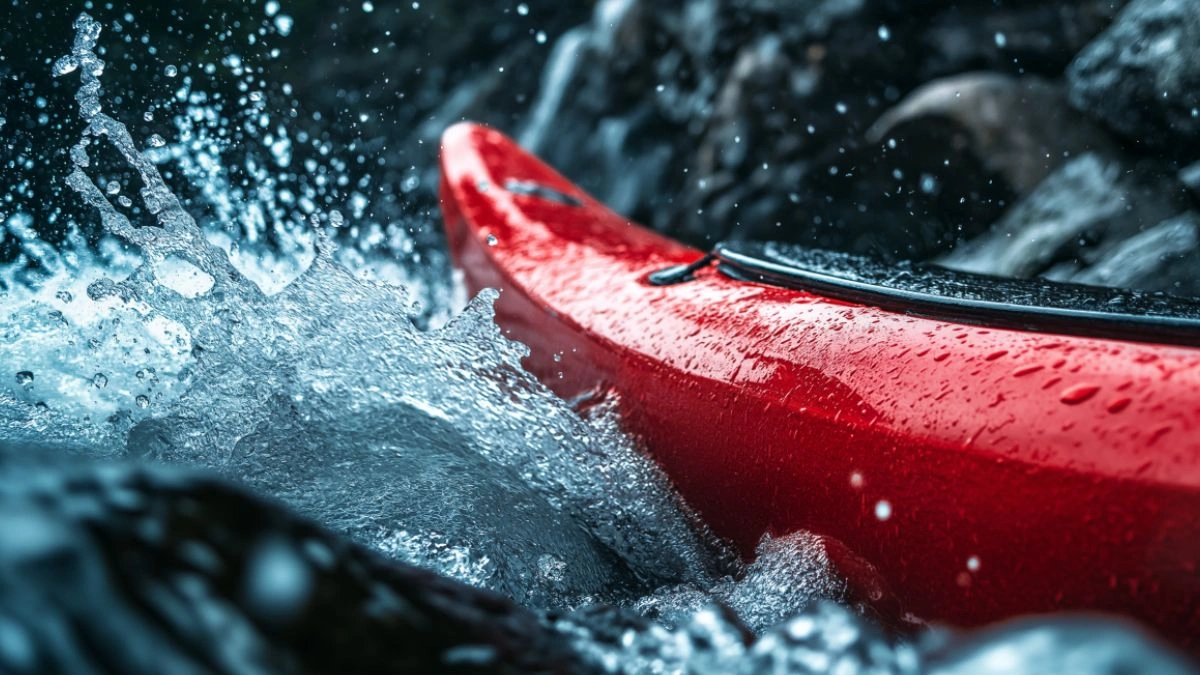From Rapids to Calm: Exploring the Kayaking Aesthetic Across Nature’s Waterscapes
Table of Contents
There’s something timeless and soul-stirring about kayaking—the rhythm of your paddle cutting through water, the open skies above, and the ever-changing canvas of nature surrounding you. Whether you’re charging through white-water rapids or floating in silence on a glassy alpine lake, kayaking offers not just a sport but a deeply aesthetic experience.
In a world where more travelers seek not just adrenaline but connection, kayaking perfectly bridges the gap between adventure and serenity. From the sculptural lines of a sleek kayak to the dramatic mist rising from early morning paddles, this activity transforms water travel into art.
This post explores the many faces of the kayaking aesthetic, from rugged rivers to tranquil lakes, minimalist gear setups to vibrant nature backdrops. You’ll discover how each environment tells a different story and how your kayaking journey can become a visual and emotional escape. Whether you’re a beginner or seasoned paddler, you’ll leave inspired to chase your own perfect view—from rapids to calm.
The Thrill of Whitewater: Rugged Beauty in Motion
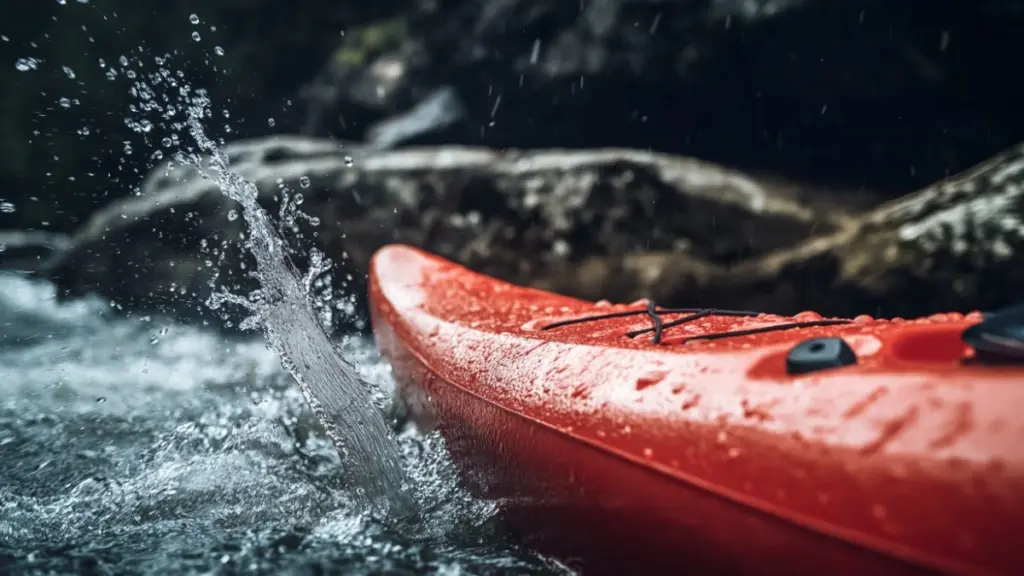
Whitewater kayaking is where energy meets elegance. The aesthetic here is fast-paced, raw, and powerful—perfect for those who crave adventure layered with visual drama. Rushing water, jagged rocks, and narrow gorges create a dynamic setting where every stroke counts.
But beneath the thrill lies a visual poetry: splashes frozen mid-air, kayaks dancing between waves, and paddlers blending into the rugged terrain. It’s a cinematic experience and one that requires focus, strength, and an appreciation of nature’s chaotic beauty.
Visual Breakdown: Key Elements of Whitewater Aesthetic
| Element | Description |
|---|---|
| Rapid Water | Whitecaps, surging currents, mist |
| Natural Textures | Rock walls, moss, tree roots |
| Color Aesthetics | Bright gear contrasts against earth tones |
| Gear Design | Sleek, durable kayaks and bold helmets |
| Lighting | Midday sun or overcast drama for contrast |
Still Waters: Serene Beauty of Lake Kayaking
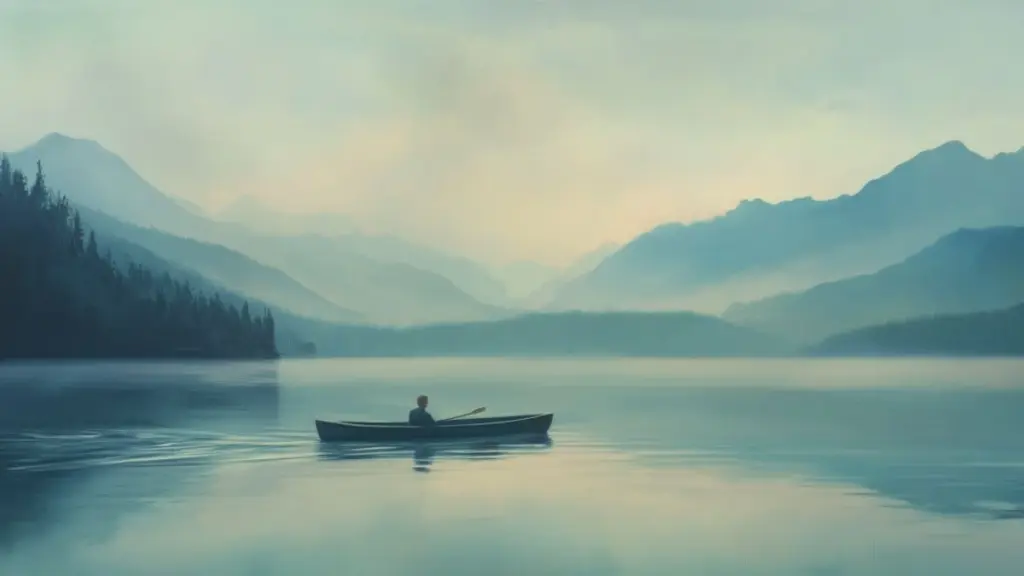
On the opposite end of the spectrum lies lake kayaking—a practice of calm, reflection, and gentle exploration. Here, the kayaking aesthetic is all about symmetry, softness, and solitude. It invites you to slow down, breathe, and simply glide.
Think mirror-like surfaces reflecting snowcapped peaks, morning fog rolling over forested banks, and the muted colors of dawn or dusk. Lake kayaking is often paired with minimalistic gear and muted tones to match the tranquil mood.
Visual Breakdown: Lake Kayaking Vibes
| Feature | Description |
|---|---|
| Calm Waters | Glassy surface, gentle ripples |
| Soft Lighting | Golden hour, foggy mornings |
| Reflection Play | Mountains, trees, and sky mirrored in water |
| Gear Aesthetic | Neutral tones, streamlined silhouettes |
| Sounds | Birdsong, paddle swish, wind rustling leaves |
River Kayaking: Where Movement Meets HarmonyRiver Kayaking: Where Movement Meets Harmony
Rivers offer a middle ground—dynamic but often less intense than rapids. The kayaking aesthetic here is one of flow. You follow the path nature carved over millennia, winding past cliff faces, through tunnels of overhanging branches, and into wide open valleys.
The mood of river kayaking can shift in moments—from sun-dappled stillness to swift bends demanding quick maneuvering. Visually, this experience is enriched by the constant change in scenery, from rocks and reeds to glimpses of wildlife.
Visual Breakdown: Aesthetic of River Routes
| Scenic Feature | Aesthetic Appeal |
|---|---|
| Varied Terrain | Cliffs, forests, sandbanks, wildflowers |
| Color Changes | Greens, browns, and golden sun reflections |
| Wildlife Sighting | Herons, deer, otters |
| Interaction | Splashing eddies and rock skipping |
| Motion Balance | Fluid transitions between speed and calm |
Ocean Kayaking: Bold Colors and Coastal Drama
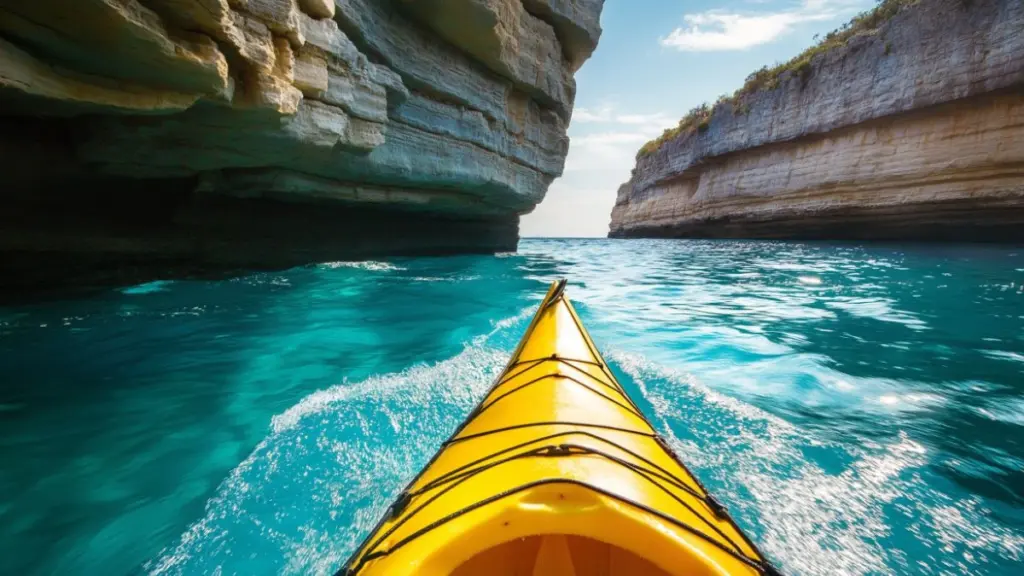
For those drawn to vast horizons and salty breezes, ocean kayaking provides an immersive aesthetic grounded in boldness. Think turquoise waves crashing on cliffs, sea caves lit by diffused light, and the long horizon as your companion.
This form of kayaking often includes striking coastal features—jagged rocks, hidden beaches, and dramatic skies. The aesthetic leans vibrant and elemental, with textures of sea foam, shells, and sun-bleached driftwood surrounding you.
Visual Breakdown: Coastal Kayaking Aesthetic
| Element | Description |
|---|---|
| Water Texture | Waves, foam, reflective sheen |
| Landscape Features | Sea caves, cliffs, coastal flora |
| Color Story | Deep blues, sandy neutrals, sea greens |
| Contrast | Kayak colors pop against natural tones |
| Soundscape | Gulls, crashing surf, echoing cave sounds |
Backcountry Paddling: Minimalism and Solitude
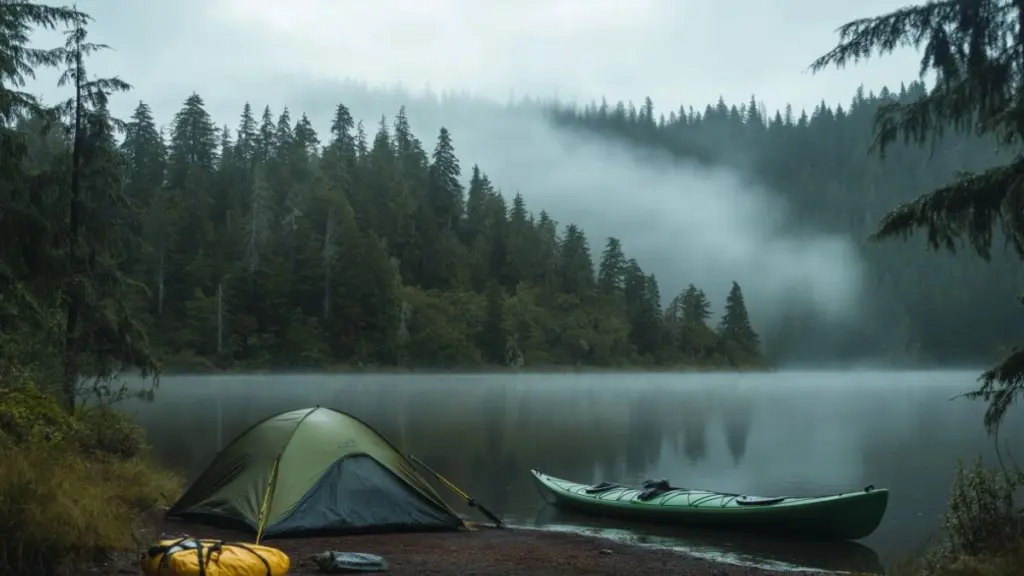
Backcountry kayaking speaks to the minimalist adventurer. It’s about self-sufficiency, unmarked routes, and quiet nights under the stars. The aesthetic is raw and untouched—reflecting simplicity, solitude, and a connection with nature.
Here, less is more. The visual emphasis is on earth tones, utilitarian gear, and vast landscapes. Often paired with camping gear and remote stops, this type of kayaking is the physical embodiment of escape and reset.
Visual Breakdown: Minimalist Kayak Camping Setup
| Element | Description |
|---|---|
| Color Palette | Earthy hues, olive, sand, charcoal |
| Camp Setup | Tent near the shore, dry bags, camp stove |
| Scene Composition | Wide open lakes, dense forests, silence |
| Style Notes | Functional gear aesthetics |
| Visual Mood | Peaceful, solitary, introspective |
Gear Meets Aesthetic – Curating Your Kayaking Style
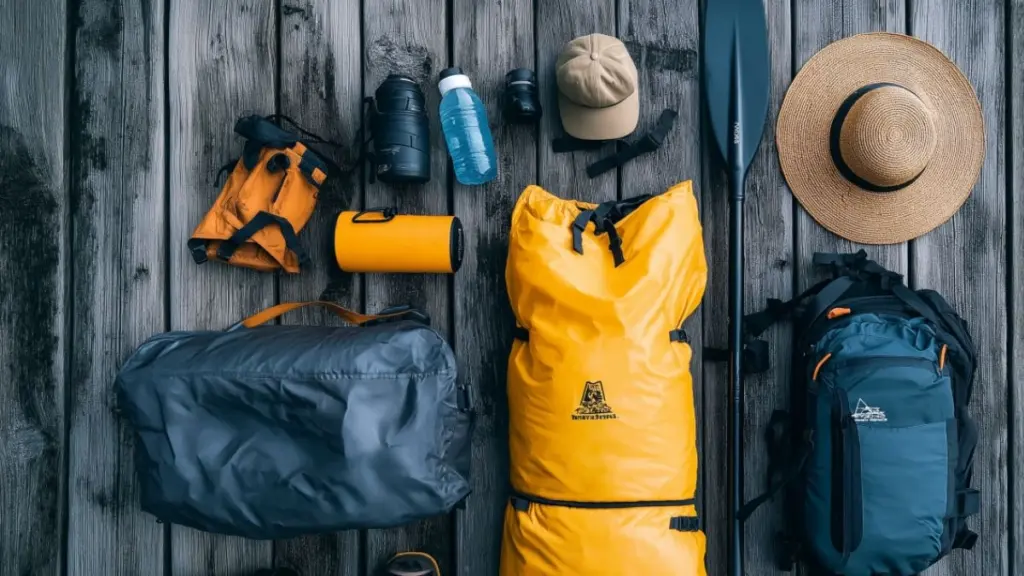
Every paddler has a style—and it’s not just about skill. The gear you choose plays a major role in shaping the kayaking aesthetic you project. From the design of your kayak to the way you pack your dry bags or dress for the paddle, every detail contributes to the story you tell.
Some favor bold colors that stand out against the natural backdrop, ideal for photography and visibility. Others prefer muted, earthy tones that blend into wild surroundings, aligning with the minimalist aesthetic of backcountry journeys.
Even paddle shapes and life vest designs contribute—streamlined silhouettes evoke modernity, while classic designs hint at tradition. Storage solutions like deck bags, bungee cords, or mounted gear add visual rhythm and functionality.
Gear Aesthetic Breakdown
| Item | Aesthetic Tip |
|---|---|
| Kayak Design | Choose matte finishes for a natural look |
| Paddle Blades | Woodgrain for warmth, carbon for sleekness |
| Dry Bags & Gear | Stick to a color theme (neutrals, earth tones) |
| Outfit Choice | Quick-dry fabrics in layered, tonal palettes |
| Accessories | Avoid clutter—keep layout intentional |
Kayaking by Season – Aesthetic Shifts Throughout the Year
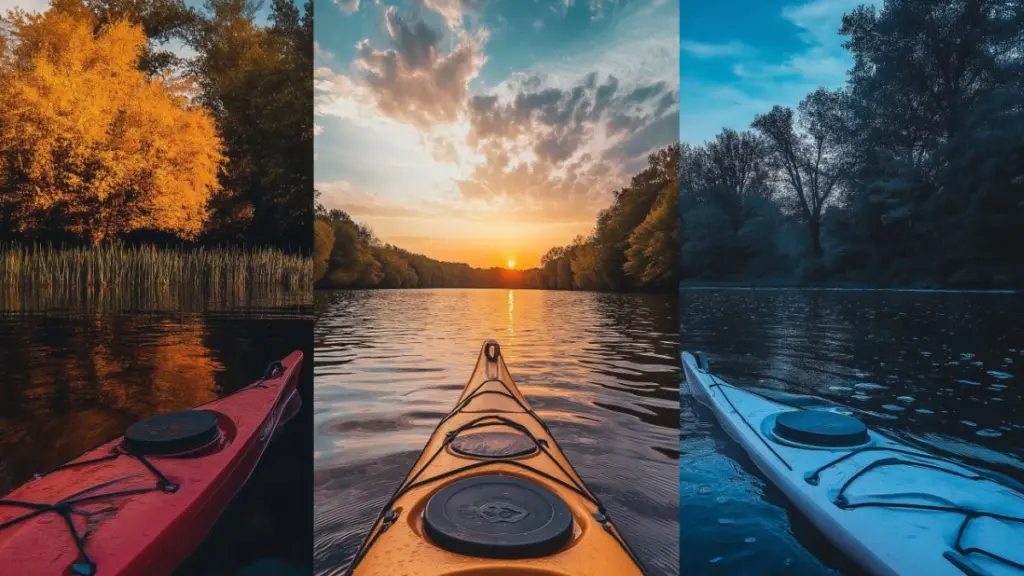
The aesthetic of kayaking evolves with the seasons. In spring, you paddle alongside budding flora and melting snowmelt streams. Summer offers golden sun, lush banks, and extended twilight hours. Autumn paints the backdrop in fiery reds and oranges, while winter kayaking—though niche—is a stark, minimalist dream of ice-blue waters and frost-covered banks.
Each season invites a unique visual experience. Your gear, clothing, and expectations shift with the temperature, but the emotional tone remains consistent—an intimate connection with the changing face of nature.
Seasonal Kayaking Aesthetic Table
| Season | Key Visual Elements | Mood |
|---|---|---|
| Spring | Blooming banks, fresh greens, misty mornings | Renewal, awakening |
| Summer | Bright skies, warm light, energetic reflections | Joy, freedom |
| Autumn | Golden tones, leaves on water, crisp air | Nostalgia, transformation |
| Winter | Stillness, icy textures, low blue light | Minimalism, solitude |
Conclusion
Kayaking is more than just a sport or outdoor activity—it’s an artistic lens through which we experience nature’s diverse moods. From the pulse-pounding thrill of whitewater to the still serenity of alpine lakes, the kayaking aesthetic offers something for every explorer.
Whether you chase movement, solitude, minimalism, or wild coastlines, kayaking immerses you in an ever-shifting visual and emotional journey. The landscape, the gear, the season—all come together to shape your story on the water. So next time you set out, consider not just where you’re paddling—but how it looks, feels, and lingers in your memory.

